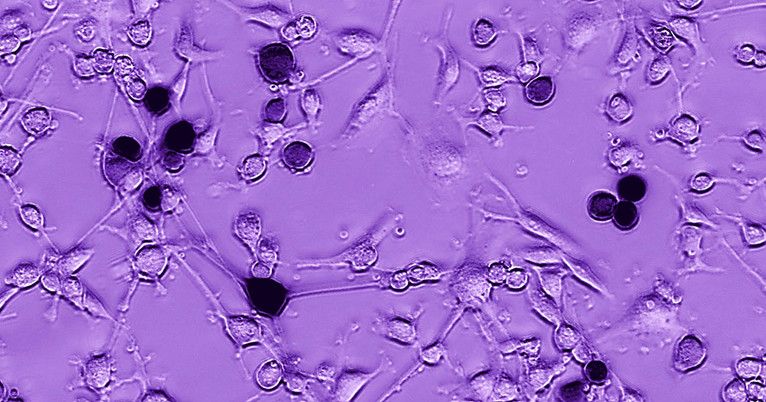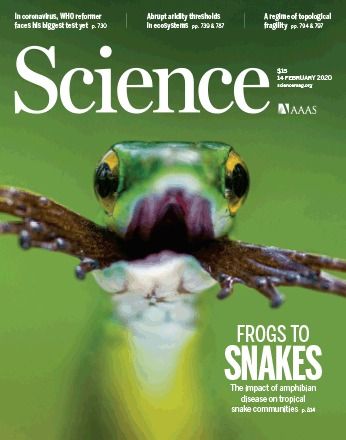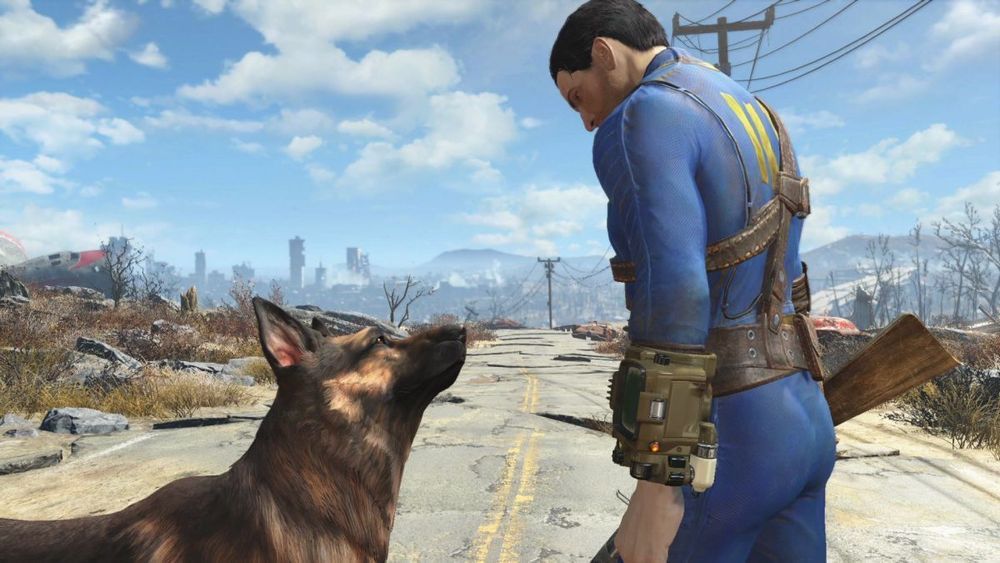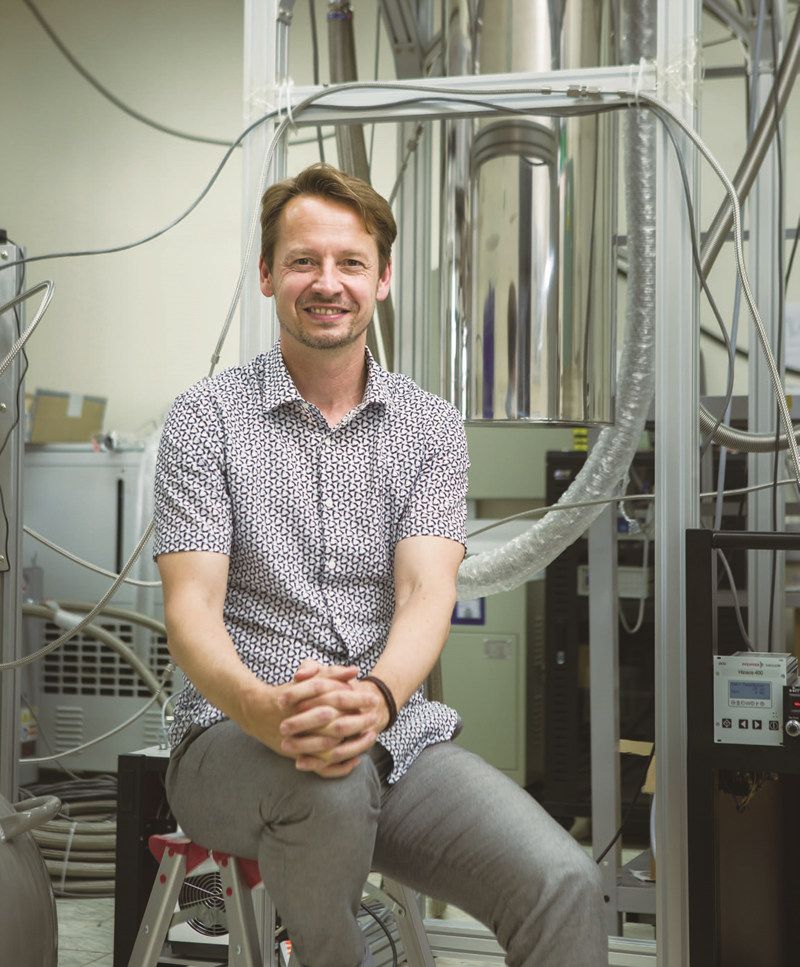Crisis Text Line used artificial intelligence to pinpoint the things people text when they’re thinking of suicide.



WASHINGTON — Northrop Grumman was awarded a $253.5 million contract by the U.S. Space Force to develop a cyber-secure communications payload that could be deployed on a military or commercial satellite.
The U.S. Space Force’s Space and Missile Systems Center announced Feb. 12 that Northrop Grumman was the first vendor selected to build a prototype payload under the Protected Tactical Satellite Communications (PTS) program that the U.S. Air Force started in 2018.
As many as four prototype payloads will be funded under the PTS program. Two payloads will be selected to launch in 2024 for on-orbit demonstrations that will last three to five years.

Glioblastomas are relentless, hard-to-treat, and often lethal brain tumors. Yale scientists have enlisted a most unlikely ally in efforts to treat this form of cancer — elements of the Ebola virus.
“The irony is that one of the world’s deadliest viruses may be useful in treating one of the deadliest of brain cancers,” said Yale’s Anthony van den Pol, professor of neurosurgery, who describes the Yale efforts Feb. 12 in the Journal of Virology.
The approach takes advantage of a weakness in most cancer tumors and also of an Ebola defense against the immune system response to pathogens.

Plant pathogens elicit an immune response through effector proteins. In turn, plant genomes encode genes that determine species-specific recognition of these effectors by a process known collectively as effector-triggered immunity (ETI). By examining a range of strains of the pathogen Pseudomonas syringae that infect the model plant Arabidopsis thaliana, Laflamme et al. generated a P. syringae Type III Effector Compendium (PsyTEC) and in turn identified the genes responsible for ETI in Arabidopsis. This pan-genome analysis revealed that relatively few A. thaliana genes are responsible for recognizing the majority of P. syringae effectors. These results provide insight into why most pathogenic microbes only infect specific plant species.
Science, this issue p. 763
Effector-triggered immunity (ETI), induced by host immune receptors in response to microbial effectors, protects plants against virulent pathogens. However, a systematic study of ETI prevalence against species-wide pathogen diversity is lacking. We constructed the Pseudomonas syringae Type III Effector Compendium (PsyTEC) to reduce the pan-genome complexity of 5127 unique effector proteins, distributed among 70 families from 494 strains, to 529 representative alleles. We screened PsyTEC on the model plant Arabidopsis thaliana and identified 59 ETI-eliciting alleles (11.2%) from 19 families (27.1%), with orthologs distributed among 96.8% of P. syringae strains. We also identified two previously undescribed host immune receptors, including CAR1, which recognizes the conserved effectors AvrE and HopAA1, and found that 94.7% of strains harbor alleles predicted to be recognized by either CAR1 or ZAR1.

The world of video games should be one without limits. Sadly, this is often not the case. As a lifelong gamer who also happens to have cerebral palsy, my own experiences with video games have been both helped and hindered by their mechanics.
Cerebral palsy manifests itself differently in every person who is diagnosed with it. Some of us can walk unassisted, while others need devices like walkers or crutches. Some of us can walk part of the time, but use wheelchairs for certain situations. Some of us can’t walk at all. Some of us have seizures (which vary in severity), impaired vision or hearing, or difficulty speaking. Adaptive gear, like the Xbox Adaptive Controller, can be helpful for some disabled gamers. However, since I can still use a traditional controller configuration, such modifications aren’t necessary for me. This, too, illustrates how cerebral palsy varies from person to person.


Hart’s demonstrations are entertainment for sure. But his message runs deeper: rhythm and vibration heal the brain. Dementia, he says, is the “loss of rhythm.” And he, along with notables who collaborated on the event — University of California at San Francisco neuroscientist Adam Gazzaley and opera singer Renée Fleming (who lent her soprano to the event’s musical track) — are all at work searching for pathways that can bypass obstacles to function and cognition. Hart has also worked with Dr. Connie Tomaino, who runs the Institute for Music and Neurologic Function, on music as a therapeutic tool for brain function.
Gazzaley is currently conducting clinical trials with healthy older adults to show how a regular regimen of digital rhythm can enhance attention and memory in people with cognitive impairment. Hart has been working with Gazzaley on what will be a downloadable app, their goal to develop a game that challenges one’s rhythmic ability, with the hope of building new neuropathways in the brain. “What we’re talking about here is a deeper and longer immersive experience which can actually harness the brain’s plasticity to change the way it functions,” says Gazzaley.
Taking up an instrument as a child, and playing through adulthood is one proven way to protect one’s brain. But learning later in life is helpful, too. Hart shares the story of his unlikely best friend, Walter Cronkite, who was 73 when he became a Deadhead, and also started playing the drums. In July of 2009, as Cronkite lay dying from complications of cerebrovascular disease, Hart handed him a hand drum. “He could no longer speak, but he could play,” Hart says, tears in his eyes. “He used to ask, ‘When we do we know we have found our groove?’ Well, he found it.”

An American biotech company says it created a coronavirus vaccine three hours after getting access to the virus’ genetic sequence in mid-January, and now scientists are racing to get the vaccine on the market in record time.
Continue Reading Below
Inovio Pharmaceuticals is based in Pennsylvania, but scientists in its laboratory in San Diego made the discovery.
Robotics technology continues to propel itself forward at an incredible rate. Robots have streamlined automated production, reducing worker injuries and manufacturing defects; in the health, sector robots perform precise, minimally invasive surgeries speeding recovery time and allowing surgeons to perform operations beyond their natural abilities. Now, robotic systems are moving past these stationary roles and finding their way into the agricultural fields around the world. These nimble, autonomous systems are poised to transform farming in an amazing way. Standing at the forefront of this inherent metamorphosis are 10 companies revolutionizing robotics in agriculture.
With a handful of awards in 2017, including being named one of the world’s most innovative robotics companies by Fast Company, Blue River Technology is redefining agriculture through their use of robotics.